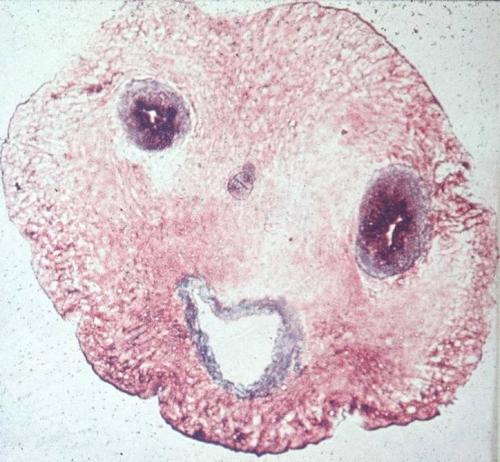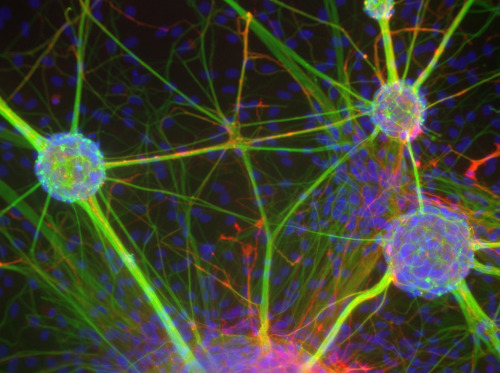Очередные открытия связанные с изучением моих любимейших повреждений ДНК описаны на http://www.scienceblog.com/cms/excess-dna-damage-found-cells-patients-friedreichs-ataxia-29177.htm:
PITTSBURGH, Jan. 14 -- Elevated levels of DNA damage have for the first time been found in the cellular mitochondria and nuclei of patients with the inherited, progressive nervous system disease called Friedreich's ataxia (FRDA), says a multicenter research team led by an expert from the University of Pittsburgh Cancer Institute (UPCI). The findings, described today in PLoS Genetics, shed light on the molecular abnormalities that lead to the disease, as well as point the way to new therapeutic approaches and the development of biomarker blood tests to track its progression.
"In FRDA, mutations in the gene frataxin reduce production of a protein that plays a role in keeping iron levels in balance within mitochondria," explained Bennett Van Houten, Ph.D., Richard M. Cyert Professor of Molecular Oncology and leader of the molecular and cellular cancer biology program at UPCI, and professor, Department of Pharmacology and Chemical Biology, University of Pittsburgh School of Medicine. "Frataxin binds iron and helps build iron-sulfur clusters, which are important constituents of cellular proteins.
"While iron is what allows blood cells to carry oxygen, too much iron is toxic to the body," said Astrid C. Haugen, lead author and program analyst at the National Institute of Environmental Health Sciences (NIEHS), part of the National Institutes of Health (NIH). "Friedreich's ataxia leads to iron overload, setting the stage for cumulative DNA damage that eventually affects patients' nerve and muscle cells."
According to the National Institute of Neurological Disorders and Stroke (NINDS), about 1 out of 50,000 Americans has Friedreich's ataxia. Symptoms appear from 5 to 15 years of age and include ataxia, or gait disturbance, that results from degeneration of nerves in the spinal cord and muscle; muscle wasting; and speech problems. Heart enlargement, arrhythmias, and heart failure are common and often the cause of early death in the most severely affected. Patients typically require wheelchairs within 10 to 20 years after symptoms begin.
For the study, the researchers profiled gene activity in blood samples from FRDA children to search for biomarkers of the disease, as compared to young healthy donors. Those data were compared to blood tests from FRDA adults, and the latter compared to a second group of healthy individuals.
"We saw gene activity patterns that are associated with responses to DNA damage, and our comparisons and follow-up tests showed us that FRDA patients have far more damage than seen in healthy people," said Dr. Van Houten, who noted that everyone has some DNA damage, at various stages of repair, in their cells. "We found gene expression signatures that correlated with frataxin levels, age of disease onset and a standardized measure of patient disability."
"If further testing validates the set of genes and activity profiles as predictive biomarkers, they could be useful in assessing the current status of a patient's illness as well as the response to experimental therapies in clinical trials," he said. "Also, new drug targets might be found in the DNA repair and iron-processing pathways affected by the lack of frataxin, generating much-needed treatment breakthroughs."
The study team includes researchers from NIEHS; NINDS; Durham, N.C.-based Expression Analysis Inc.; Duke University; Université Pierre et Marie Curie, Paris; and Hôpital Pitié-Salpêtrière, Paris.
This work was supported by the NIH Intramural Program and a Bench-to-Bedside award.
About UPCI
As the only NCI-designated comprehensive cancer center in western Pennsylvania, UPCI is a recognized leader in providing innovative cancer prevention, detection, diagnosis, and treatment; bio-medical research; compassionate patient care and support; and community-based outreach services. UPCI investigators are world-renowned for their work in clinical and basic cancer research.
About the University of Pittsburgh School of Medicine
As one of the nation's leading academic centers for biomedical research, the University of Pittsburgh School of Medicine integrates advanced technology with basic science across a broad range of disciplines in a continuous quest to harness the power of new knowledge and improve the human condition. Its Department of Pharmacology & Chemical Biology fosters an intellectual and physical environment in which basic chemical principles are applied to the understanding of cell signaling events with the goal of creating new therapeutic strategies. Driven mainly by the School of Medicine and its affiliates, Pitt has ranked among the top 10 recipients of funding from the National Institutes of Health since 1997 and now ranks fifth in the nation, according to preliminary data for fiscal year 2008. Likewise, the School of Medicine is equally committed to advancing the quality and strength of its medical and graduate education programs, for which it is recognized as an innovative leader, and to training highly skilled, compassionate clinicians and creative scientists well-equipped to engage in world-class research. The School of Medicine is the academic partner of UPMC, which has collaborated with the University to raise the standard of medical excellence in Pittsburgh and to position health care as a driving force behind the region's economy. For more information about the School of Medicine, see www.medschool.pitt.edu.
Link:
http://www.upmc.com/communications/newsbureau
22.01.2010
Роль поврежлений ДНК в атаксии Фридриха
Подписаться на:
Комментарии к сообщению (Atom)











0 +:
Dí lo que piensas...